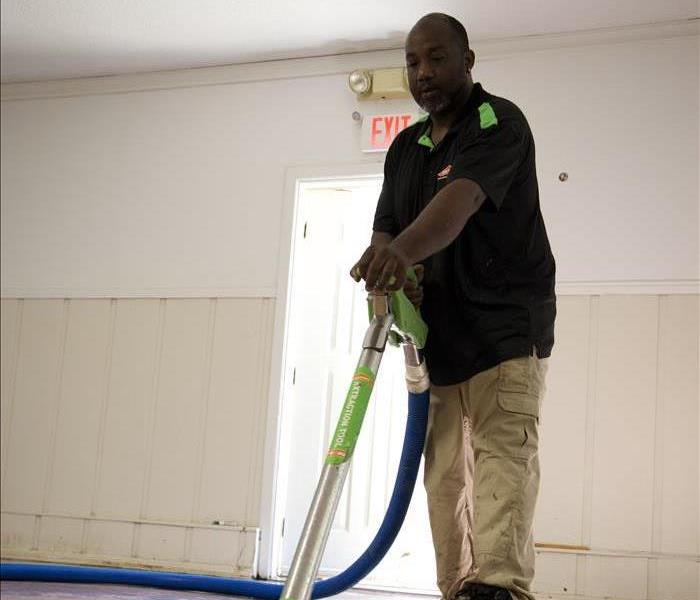Dehumidifiers and Mold Prevention: What You Need to Know
11/13/2024 (Permalink)
Mold is one of the most common problems homeowners face, especially in humid environments. The good news? Dehumidifiers can help you stay ahead of the problem. In this blog, we’ll share expert insights on how dehumidifiers work, why they’re essential for mold prevention, and tips for using them effectively in your home.
How Dehumidifiers Prevent Mold Growth
Mold thrives in environments with excess moisture. When the humidity in your home exceeds 60%, it creates the perfect conditions for mold to grow on walls, ceilings, and even furniture. Dehumidifiers work by reducing the humidity level in the air, making it difficult for mold to develop. By keeping indoor humidity between 30% and 50%, you can significantly lower the risk of mold growth.
According to the Environmental Protection Agency (EPA), maintaining relative humidity below 60% is crucial for preventing mold in homes, especially in areas like basements and bathrooms where moisture tends to accumulate. To learn more, visit the EPA’s guide on mold prevention.
Best Places to Use a Dehumidifier for Mold Prevention
While dehumidifiers can be used in any room of your house, certain areas are more prone to excess moisture. Consider placing dehumidifiers in the following locations:
- Basements: Basements often trap moisture, making them a hotspot for mold growth.
- Bathrooms: Hot showers and poor ventilation can lead to increased humidity levels.
- Kitchens: Steam from cooking and washing dishes can elevate humidity, especially in poorly ventilated spaces.
- Laundry Rooms: Dryers and washing machines generate humidity, increasing mold risk in enclosed spaces.
By targeting these high-moisture areas, you’ll be able to use your dehumidifier more effectively.
Choosing the Right Dehumidifier
Not all dehumidifiers are created equal. When choosing one for mold prevention, it’s essential to consider factors like the size of the room, humidity levels, and energy efficiency. Here are some things to keep in mind:
- Capacity: Ensure your dehumidifier can handle the square footage of the room it’s placed in.
- Auto-Shutoff: Look for a dehumidifier with an automatic shutoff feature to prevent overflow when the water tank is full.
- Energy Star Rating: An energy-efficient dehumidifier can save you money on electricity while maintaining a lower humidity level in your home.
Expert Tip: Keep Humidity in Check
Even with a dehumidifier, it’s important to monitor the humidity in your home regularly. Use a hygrometer to measure humidity levels, ensuring they stay within the recommended range of 30-50%. For severe cases of mold or excess moisture, calling a professional service like SERVPRO® of Affton/Webster Groves can help you effectively manage mold and moisture problems before they get out of hand.
By taking these simple steps and investing in a reliable dehumidifier, you can help protect your home from mold while maintaining a comfortable living environment.





 24/7 Emergency Service
24/7 Emergency Service
